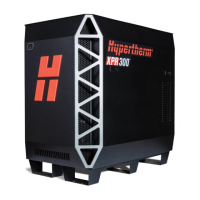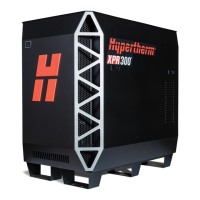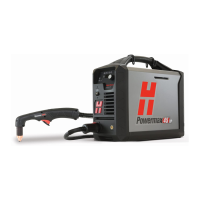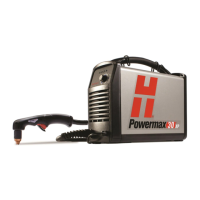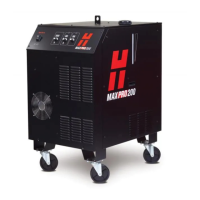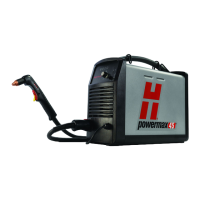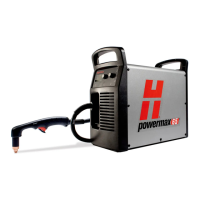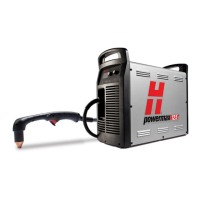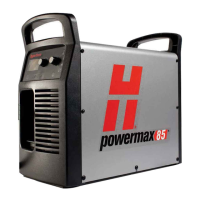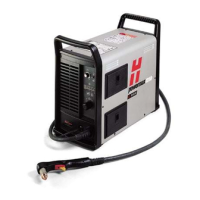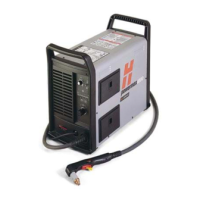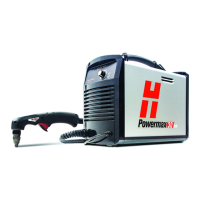Operation
XPR300 Instruction Manual 809480 229
Table 31 – Process category options and expected quality-speed results for non-ferrous processes
In general, Hypertherm recommends dross-free processes. Non-ferrous
dross is very difficult to remove. Depending on the gas-connect console,
the XPR300 cutting system offers the following non-ferrous cutting
processes: Air/Air, N
2
/N
2
, N
2
/H
2
O, F5/N
2
and mixed-fuel gas/N
2
. For
guidance about process selection, refer to Table 29 – Process
recommendations for cut quality, based on metal thickness and type on
page 220 and the XPR Cut Charts Instruction Manual (809830).
Process
category
number
Process category
condition
Category description Quality Speed
Category 1 Process Core
Thickness (PCT)
• Whenever possible, select Category 1 for
optimal edge quality and speed, with
minimal dross.
• The process is optimized for this thickness.
• Expect cut speeds that range from
1,016 mm/min – 3,048 mm/min
(40 in/min – 120 in/min).
• Dross free, in most cases.
Very
good –
excellent
Very good
Category 2 Thicker than PCT • In most situations, you can expect square
cut edges with sharp top edges.
• Darker edge color is possible with stainless
steel.
• Expect cut speeds that are slower than
1,016 mm/min (40 in/min).
• Expect some dross.
Good –
very good
Lower
Category 3 Thinner than PCT • Select Category 3 when speed is more
important than edge quality.
• Expect cut speeds that are faster than
3,048 mm/min (120 in/min).
• Expect some dross.
Lower Higher
Category 4 Edge Start Only • Edge start is required.
• Darker edge color is possible with stainless
steel.
• Thick dross is likely.
Good Low
Category 5 Severance • This is the maximum thickness for these
processes.
• Edge start is required.
• Expect cut speeds that are slower than
250 mm/min (10 in/min).
• Cut-edge quality can be rough.
• Expect significant dross.
• Thick-metal cutting techniques can be
necessary.
Very low Very low
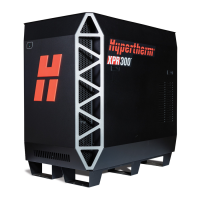
